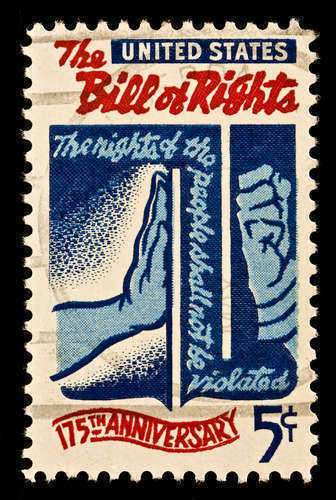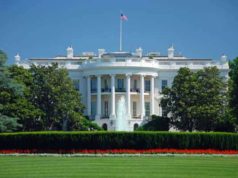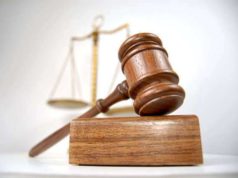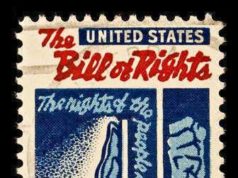Table of Contents

Introduction:
The Bill of Rights is a document that is integral to the American political and legal systems. Comprising of the first ten amendments to the United States Constitution, it is a testament to the American commitment to protecting the individual rights and freedoms of citizens. The Bill of Rights was drafted shortly after the ratification of the U.S. Constitution and was designed to address concerns that the Constitution did not adequately protect individual liberties. In this article, we explore the history of the Bill of Rights, its impact on US politics, and its influence on the legal system.
History of the Bill of Rights:
The Bill of Rights was proposed by James Madison in 1789, just two years after the ratification of the U.S. Constitution. Madison, who had initially opposed the inclusion of a bill of rights in the Constitution, came to see its necessity once the Constitution was ratified by the states. Madison argued that a bill of rights was needed to protect individual liberties and prevent the federal government from abusing its power.
The Bill of Rights was proposed to Congress in 1789, and twelve amendments were initially suggested. The first two proposed amendments were not ratified, and the remaining ten were adopted by the requisite number of states and became part of the Constitution on December 15, 1791.
The ten amendments that comprise the Bill of Rights are as follows:
1) The First Amendment: Protects the freedoms of speech, religion, press, assembly, and petition.
2) The Second Amendment: Protects the right to bear arms.
3) The Third Amendment: Prohibits the quartering of soldiers in private homes.
4) The Fourth Amendment: Protects against unreasonable searches and seizures.
5) The Fifth Amendment: Protects against self-incrimination and double jeopardy.
6) The Sixth Amendment: Provides for the right to a fair and speedy trial by an impartial jury.
7) The Seventh Amendment: Protects the right to a trial by jury in civil cases.
8) The Eighth Amendment: Prohibits excessive bail and fines, and cruel and unusual punishment.
9) The Ninth Amendment: States that the enumeration of certain rights shall not be construed to deny or disparage other rights retained by the people.
10) The Tenth Amendment: Limits the powers of the federal government to those specifically granted by the Constitution and reserves all other powers to the states or to the people.
Impact of the Bill of Rights on US Politics:
The Bill of Rights has had a significant impact on US politics since its adoption in 1791. Its protections of individual liberties have been instrumental in shaping American society and protecting citizens from government abuse.
The First Amendment, which protects freedom of expression, is one of the most important provisions of the Bill of Rights. It has been used to protect political speech, artistic expression, and religious freedom. The First Amendment has been invoked in many controversial cases, such as the 1969 case of Tinker v. Des Moines Independent Community School District, which upheld the right of students to wear black armbands in school to protest the Vietnam War.
The Second Amendment, which protects the right to bear arms, has been a subject of much debate in recent years. Gun control advocates have called for stricter regulations on firearms, while gun rights advocates have invoked the Second Amendment as a protection against government intrusion into private life.
The Fourth Amendment, which protects against unreasonable searches and seizures, has been the subject of much controversy in recent years, particularly in the context of law enforcement surveillance. The Supreme Court has issued several landmark decisions that have addressed the scope of protection provided by the Fourth Amendment, including the 1967 case of Katz v. United States, which established that electronic surveillance is the equivalent of a physical search.
The Impact of the Bill of Rights on the Legal System:
The Bill of Rights has had a profound impact on the US legal system in the over two centuries since its adoption. The Bill of Rights has been interpreted and reinterpreted by the courts over the years, reflecting changing social and political norms.
One of the landmark cases that set the tone for the interpretation of the Bill of Rights was the 1833 case of Barron v. Baltimore, in which the Supreme Court held that the Bill of Rights did not apply to the states. The decision was criticized for many years as granting the states too much power and leaving citizens without adequate protection of their rights.
However, over time, the Supreme Court began to apply the Bill of Rights to the states through the Fourteenth Amendment. The process of incorporation, as it is known, was a significant development in the interpretation of the Constitution and has had a profound impact on American society.
The Bill of Rights has been the subject of numerous landmark cases over the years. One of the most significant was the 1966 case of Miranda v. Arizona, which established the requirement that law enforcement officers inform suspects of their rights before questioning them. The Miranda warning, as it is now commonly known, is a cornerstone of American criminal procedure and has been invoked in countless cases since its adoption.
Another significant case that addressed the Bill of Rights was the 1973 case of Roe v. Wade, which established the right of women to obtain abortions. The decision was based on the right to privacy, which the Supreme Court had established through its interpretation of the Fourth Amendment.
Conclusion:
The Bill of Rights has had a significant impact on the US political system and legal system since its adoption over two centuries ago. Its provisions have helped to protect individual liberties, limit the power of government, and shape American society. The Bill of Rights has been the subject of much controversy over the years, but its legacy continues to inspire people around the world and remains a fundamental part of American constitutional law and democratic values.
The Bill of Rights are the first ten Amendments in the United States Constitution. Adopted in 1777, the original Constitution has limited in detail the rights of the individual American, opting instead to primarily focus on establishing the rights and powers of an effective Federal Government.
Individual freedoms were initially governed by varying State Constitutions. Many Founding Fathers were skeptics over outlining individual rights in the U.S. Constitution.
Before understanding the Bill of Rights and the freedoms it exhibits, one must acknowledge its origins and the modification required for its inception. Following the Revolutionary War, the United States created the Articles of Confederation, which legally established America as a sovereign nation.
Created in November of 1777, the Articles of Confederation was essentially the framework upon which the United States and its Federal Government was built. During this time of transition, the Founding Fathers constantly tweaked the Constitution.
The ratification process ultimately lasted fifteen years; the critical argument responsible for extending the renovation revolved around the relationship between the Federal Government, the State governments, and the individual American.
The nation was under a fervent debate. “Federalists” wanted a more powerful central government to ensure a stable tax system, while “Anti-Federalists” felt that a powerful government would eventually lead to autocracy. A true equilibrium was never reached and the Articles of Confederation failed at establishing a harmonic relationship between the Federal and State governments.
State representatives and the Founding Fathers decided to overhaul the Articles, and instead adopt a Constitution in 1787. The Constitution sought to create a Republic as defined by the Age of Enlightenment or Western Philosophy. The Constitution aimed to question the traditional institutions displaced by a monarchy and quell the disputes between the Federal and State governments.
Although the Constitution was seen as a great improvement to its predecessors, debate still existed in regards to the rights of the American citizen. During George Washington’s first presidency, opponents routinely questioned the limitations of the individual, citing Britain as an example of a government that was simply too powerful.
State leaders believed that the powers given to the Government were imbalanced; the Constitution would open itself to tyranny and a subsequent revolt by the citizens would take place. To alleviate the tension imposed, an establishment of individual rights was greatly needed.
On September 25, 1789, during the first In congressional meetings in the United States history, the rights of an American citizens were officially introduced. Led by James Madison, the original rights outlined in 1789 were unanimously passed in 1791 under the Bill of Rights. The initial proposal included 12 Amendments, or rights, for the individual
American, but was later contracted to ten in 1791.
The Bill of Rights unequivocally distributed rights to the American individual. Congress or the Federal The government cannot supersede the freedoms outlined in the first 10 Amendments. The individual freedoms detailed in the Bill of Rights are summarized below for clarity purposes:
1st Amendment: Congress will not prohibit the free exercise of religion or make a law on the establishment of a dominant practice. An individual also has freedom of speech which also extends to the press.
2nd Amendment: Perhaps the most controversial of Amendments. An individual or
militia has the right to bear arms (debate exists over the 2nd Amendment because of the violent nature of firearms).
3rd Amendment: Protection of quartering troops. A soldier is not allowed to be stationed in an owner’s home without consent.
4th Amendment: Protection from search and seizure. An individual will not be subject to random searches of private property by Government agents unless a warrant or reasonable cause is produced.
5th Amendment: Outlines the due process of law. In a criminal case, a person shall
not be a witness against himself, nor be deprived of liberty, life, or property.
6th Amendment: All individuals will be afforded the right to a fair, speedy, and public trial by an impartial jury. All individuals will also be afforded the right to a lawyer or legal assistance for defense.
7th Amendment: Common lawsuits or civil matters will also be presided by a jury or
court.
8th Amendment: Excessive bail or cruel and unusual punishment is prohibited.
9th Amendment: Outlines a series of rights not specifically listed in the Constitution.
10th Amendment: Balances out the governing power between states and the Federal Government.
Outlines the powers of states and people and awards governing rights to jurisdictions. The Bill of Rights was spawned through the debate between Anti-Federalists and Federalists. Individualism and the prospect of a free nation were the fundamental points for which the Bill of Rights was created. The Bill of Rights outlined freedoms given to individual Americans on a Federal level, but was strongly influenced by pre-written Constitutions of
varying states.
For instance, the Virginia Declaration of Rights (written by James Madison) was an eminent doctrine during the Revolution and offered equal rights to all citizens. Although influenced by State governments, the Bill of Rights applies specifically to the Federal Government. Madison and other leaders attempted to modify the Amendments so they could limit the power of State governments, but this proposal was rejected by Congress, therefore solely appointing the Bill of Rights as a Federal guideline.
In order for the Constitution and the subsequent Bill of Rights to be ratified, three quarters or a majority of the states had to approve. The timeline varies in regards to the individual State ratification of the Constitution and the Bill of Rights, but over the 15 years or so of deliberation and construction, a majority was eventually reached. When the states approved such legislation the power between the Federal Government, State
governments, and individual American were finally rendered succinct.

























